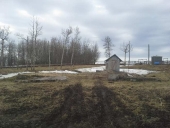M. A. Carey wrote:The box is insulated with 1-1/2" styrofoam on all sides, bottom with thin plastic above the styrofoam (with small slant and drain for runoff from cleaning during maintenance), and the top is insulated, and shingled on the outside, which is slanted like a house roof. This top/lid, comes off to maintain and check the batteries. We have siding on the outside of the box on all sides other than the shingled roof. The battery box is right next to our cabin, on the south side, where it is close to have all the wiring coming into the cabin and also close to the solar panels that are on frames and can be tilted
Thanks for the reply and I have no particular problems with batteries being stored in a well ventilated box.
The thing to consider in these arrangements is that the battery charge controller possibly should have a temperature probe attached to the side of the batteries. The reason for this is that:
- In summer when the batteries are warm to hot, and yours are facing south so that the box they are in may receive direct sunlight as well as warm air temperatures. The batteries should be charged at a lower voltage than at colder temperatures. You run the risk of the batteries venting hydrogen and oxygen if you do not compensate for battery temperatures. Summers here can get over 100'F so perhaps this is more of a concern for down here.
- In winter when the batteries are cool to cold, they need to be charged at higher voltages because the chemical reaction is more sluggish. The alternative is that the batteries are undercharging during this time, and there is the inevitable risk of draining the batteries.
Most charge controllers have temperature probes attached to the sides of the controller - and that controller may sit inside a warm cabin rather than outside with the batteries.
As another consideration, styrofoam is a very flammable product - although as you correctly note - it is an excellent insulator. I believe this material was the possible culprit in the recent fire at the Grenfell Tower in London where I believe 58 people died (and maybe more). I'd suggest instead using mineral wool or fire check plaster, fibro cement as a possible alternatives.









